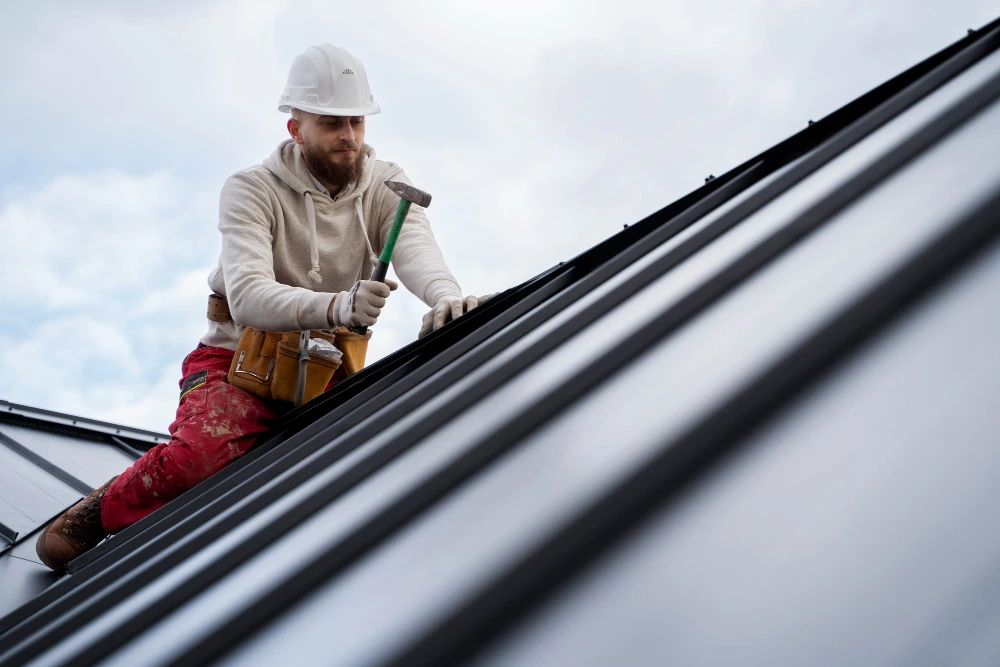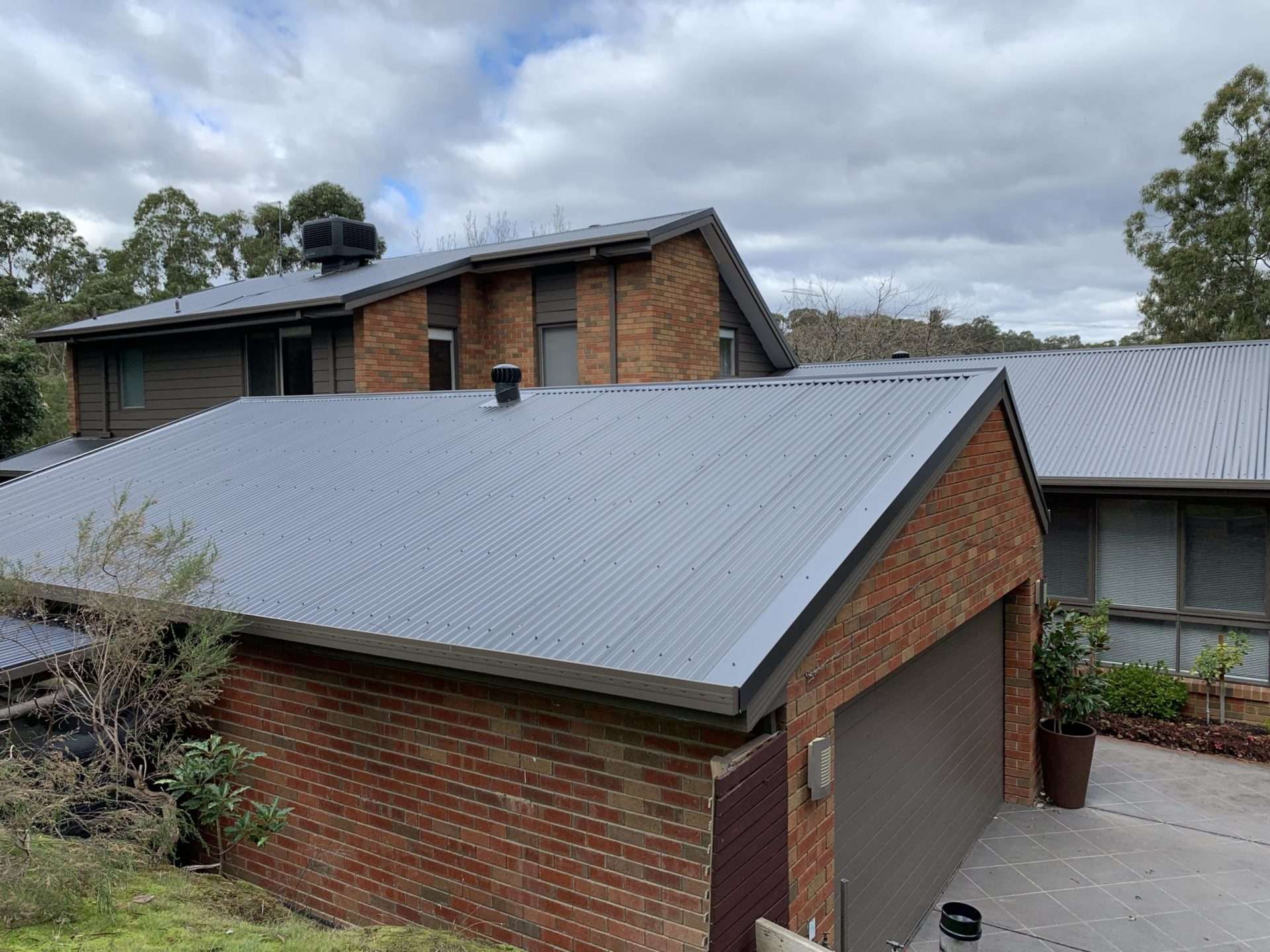Imagine returning to your Wollongong seaside home after a surf at North Beach – the wind in your hair and sun on your shoulders. Meanwhile, your house’s crown (the roof) is silently battling salt-drenched air, UV scorch, and unexpected storms.
In Wollongong’s coastal climate, salt-laden breezes pick up tiny sand and salt crystals, then hurl them at your terracotta tiles. Left unchecked, this cocktail of salt, humidity and heat can chew through tile glazes and plaster just like over-zealous exfoliation.
In fact, experts warn that “salty air…will corrode your roof ten times faster than air at normal humidity levels”. That means without upkeep, your charming terracotta roof risks looking ragged long before its time. The good news? Terracotta tile restoration is like a spa day for your roof – it cleans, repairs, seals and prolongs tile life.
Read on to discover why your tiles need TLC, the red flags to watch for, and how regular roof renewal keeps your home both stylish and safe under Wollongong’s harsh skies.
Wollongong’s Climate: A Tough Love for Roofs
Your roof is the hero protecting you from every sunbather’s delight and drench. But while you soak up Wollongong’s seaside lifestyle, your tiles are taking a pounding. The ocean’s moisture and salt rides every breeze, landing on your roof like tiny specks of rust.
Saltwater corrosion is a real threat here – in salty coastal air your roof can age at ten times the normal rate. Then there’s the moisture: humid air means mold loves the parties up there. Vivify Roofing notes that in higher humidity “more mould will grow” on roofs, which not only looks bad but can degrade tiles and even affect your health.
Storms and wind can fling debris onto the roof, while constant UV bleaches tile colour and makes surfaces brittle. Even coastal sand is an issue – windblown grit can sandpaper your tiles, fading them and roughening the surface (one fix is a sealant coat, but it must be renewed regularly).
Add bushfires to the mix, and you see why Wollongong homes need vigilant care. The NSW Government’s Bush Fire Household Assessment Tool helps homeowners understand their property’s risk exposure and offers practical roof safety tips.
The good news is terracotta tiles are inherently fire-resistant – a real bonus in bushfire-prone NSW. But clogged gutters or piled-up debris can still make any roof flammable. In short, your terracotta roof is strong, but it’s under siege. It needs scheduled upkeep – not luxury – to survive. That’s where terracotta tile restoration comes in.
What is Terracotta Tile Restoration?
Think of roof restoration like a makeover for your house’s “hat”. It’s a multi-step process that cleans, fixes and protects every tile so the whole roof functions like new. Here’s what typically happens:Add bushfires
Inspection:
A professional roofer scouts all those high corners (dangerous DIY). They spot cracked tiles, broken flashings, gutter blockages, loose ridges – anything that needs attention.
Cleaning (Not High-Pressure Blitzing):
The roof is washed using soft methods (low-pressure wash or roof-safe chemicals). This gently blasts off moss, algae, lichen and salt deposits without chipping tiles. (Pressure cleaning is usually a no-no – too much pressure can crack tiles and void warranties.)
Cracked Tile Repair/Replacement:
Any broken or chipped terracotta tiles are replaced. Often you can swap out one damaged tile and preserve the rest of the roof. As Vivify notes, “most of the time if you have a cracked or damaged tile, we can just replace or fix that one without too much hassle”. For tiny cracks, special roofing cement or flexible sealant fills the gap and keeps water out.
Repointing:
Ridge capping and any loose flashings are re-secured with fresh mortar or new clips so wind and water can’t sneak in.
Sealing & Glazing:
Finally, a specially formulated sealant or terracotta glaze is rolled or sprayed on. This adds a fresh layer of protection – think of it as sunscreen or a raincoat for your tiles. Sealing helps repel moisture, keep dirt out of the pores, and restore colour (UV protection) to the roof. Over time it will wear off, but a single high-quality seal can last many years before a touch-up is needed.
This roof tile sealing step is crucial in coastal areas. A clear or tinted sealant will slow salt and UV damage, but remember: even a great sealant won’t last forever. Plan to refresh it periodically (often every 5–10 years) so your roof stays tough against the elements.
Benefits of Roof Restoration
Why bother giving your roof this makeover? Glad you asked. A proper terracotta tile restoration pays off in many ways:
Longer Roof Life:
Restoration extends your roof’s lifespan by decades. It nips small problems in the bud (replace that cracked tile now, avoid a wet ceiling later). Source: Roof experts agree that fixing minor issues and sealing tiles adds years to a roof, delaying a costly replacement. With care, terracotta roofs can easily last 75 years or more.
Curb Appeal & Value:
Fresh tiles make your house look years younger. A clean, vibrant terracotta roof dramatically boosts curb appeal. (Think of it like polishing a classic car – neighbourhood jaws will drop.) In fact, home buyers notice well-maintained roofs. A study says a tidy roof is a “key factor” for purchasers, so restoration can increase your property’s market value.
Cost-Effective:
You save money in the long run. A restoration is much cheaper than tearing off the whole roof. Instead of $20K+ for a brand-new roof, a cleaning/repair/seal run might cost only a fraction. That quick facelift can defer a full replacement (and save thousands in labour and materials).
Energy Efficiency:
Clean, sealed tiles can help regulate attic temperatures. Cracked or dirty tiles let heat into your home; fresh, sealed ones reflect more sun and insulate better. You might not get a tax credit, but you will notice a slightly cooler house in summer (and a tick in the green box).
Peace of Mind:
Worst-case storms or bushfires aside, a restored roof protects your home. It keeps leaks at bay and maintains structural integrity. You won’t wake up to ceiling drips or surprise mould underneath, meaning fewer emergency repairs and insurance headaches. Consider it like any other appliance: a little maintenance avoids big disasters later.
Roof Maintenance vs. Neglect: A Comparison
| Aspect | With Regular Care (Restoration) | If You Skip It (Neglect) |
|---|---|---|
| Lifespan | Decades longer – up to 75+ years with TLC. | Dramatically shortened by rot and leaks; may fail <40 years. |
| Appearance | Tiles look fresh and clean (no moss or stains). | Faded, dirty, overgrown with moss/lichen. |
| Curb Appeal | Home value rises – buyers love a tidy roof. | Lowers property value; shabby look. |
| Costs | Small periodic costs (inspections, touch-ups). | Big bills later – full roof repair/replacement. |
| Energy Use | Sealed tiles reflect heat – home stays cooler. | Cracked/dark tiles absorb heat – higher bills. |
| Leak Risk | Waterproof and secure – protects interior. | Water penetration leads to mould, rot, drywall damage. |
The contrast is clear: maintained roofs stay strong, stylish and cost-effective, whereas neglected roofs become liabilities – fast.
How Do You Know When to Act?
Fortunately, your roof gives clues before it quits. Watch for:
Cracked or Broken Tiles: If a tile is split or missing, water can stream right in. (Even small hairline cracks let moisture seep.) Inspect your roof or look in the attic after rain.
Dislodged or Loose Tiles: Tiles that have slid out of place – maybe after a storm or heavy foot traffic – need re-bedding.
Sagging or Soft Spots: Any sag in the roof deck or a squashy feel up there means damage below. Don’t ignore an uneven roof line.
Moss, Algae or Lichen Growth: Green or grey fuzzy patches are not just ugly; they trap moisture and can erode tile surfaces. A roof covered in green carpet is screaming for a clean.
Faded/Discolored Look: Terracotta should have a rich earthy tone. If your roof looks patchy or chalky, its protective glaze has worn off.
Ceiling Stains or Drips Indoors: Dark water spots on ceilings/walls are a big red flag that water’s getting through. That leak often starts at a cracked tile or deteriorated joint.
Damaged Flashing or Ridge Caps: The metal bits (flashing, ridge capping) around chimneys, roof hips and edges wear out too. Broken or rusted flashings often cause leaks even if tiles look fine.
A local terracotta roof specialist points out: “Look out for cracked tiles, any moss/algae growth, broken ridge capping, or water stains inside – these are key indicators your clay roof needs attention”. Basically, if you see any of these warning signs, it’s time to call in a pro for a roof tune-up.
Before-and-After: The Difference Maintenance Makes

A picture says a thousand words. On a neglected roof (left), lichen and moss have set up camp between sagging tiles. Water stains can creep in any moment. On a restored roof (right), tiles look crisp and uniform – almost as good as new. (Imagine your own roof like this: bright, tight tiles shimmering under sun.)
Give Your Roof the Spa Treatment
Your home deserves a roof that’s more than just “old clay tiles”. It should be a rugged, reliable shield that lasts decades. In Wollongong’s harsh coastal climate – with salt breezes, blazing sun and bushfire risk – terracotta tile restoration is not a luxury, it’s a necessity. By cleaning off corrosive salts, replacing damaged tiles, and sealing everything, you essentially renew your roof’s life and style.
Ready to treat your roof right? Scheduling a terracotta tile restoration with experts is easier than surfing Austinmer’s waves. The pros will have your roof looking crisp and watertight, keeping leaks and moss at bay. Don’t wait for a drippy ceiling or a stranded tile to remind you – act now. Help your terracotta tiles weather Wollongong’s elements in style, and they’ll protect your home faithfully for many years.
Frequently Asked Questions
How often should terracotta tiles be restored?
Give your roof a check-up about every 1–2 years. A quick inspection and gentle clean can catch problems early. The full restoration (cleaning, repairs and resealing) is usually needed only once per decade or so – say, every 8–15 years depending on wear. But don’t wait until tiles leak or crumble before giving it TLC.
Can you pressure-clean terracotta roof tiles?
Strictly speaking, avoid high-pressure washers. The intense spray can crack or chip clay tiles and strip away sealants. Most professionals use a low-pressure “soft wash” technique: special eco-friendly cleaning agents plus gentle rinsing. This removes dirt and algae without etching the tile. In short – no hardcore blasting up there. (Pressure cleaning can actually make tiles more porous over time.)
How do you fix cracked terracotta tiles?
In many cases you don’t need to retile the whole roof – just swap out the bad tile or patch the crack. A roofer will lift a few tiles, pop in a matching new one and bed it in place, sealing edges with mortar or tile adhesive. For small cracks, roof cement or clear silicone can fill the gap. As Vivify Roofing notes, “if you have a cracked tile, we can just replace or fix that one without too much hassle”. It’s usually a quick fix that prevents a leak from getting worse.
What are the signs my terracotta roof needs restoration?
Keep an eye out for the red flags above – especially cracks, leaks or moss. In practical terms: check if tiles are visibly broken or dislodged; look for green/grey growth; climb up (safely) or inspect the attic for any fresh drips after rain. If your once-vibrant clay roof now looks dull or patchy, or if chimneys and valleys are crumbling, those are sure signs your tiles are crying out for help.




